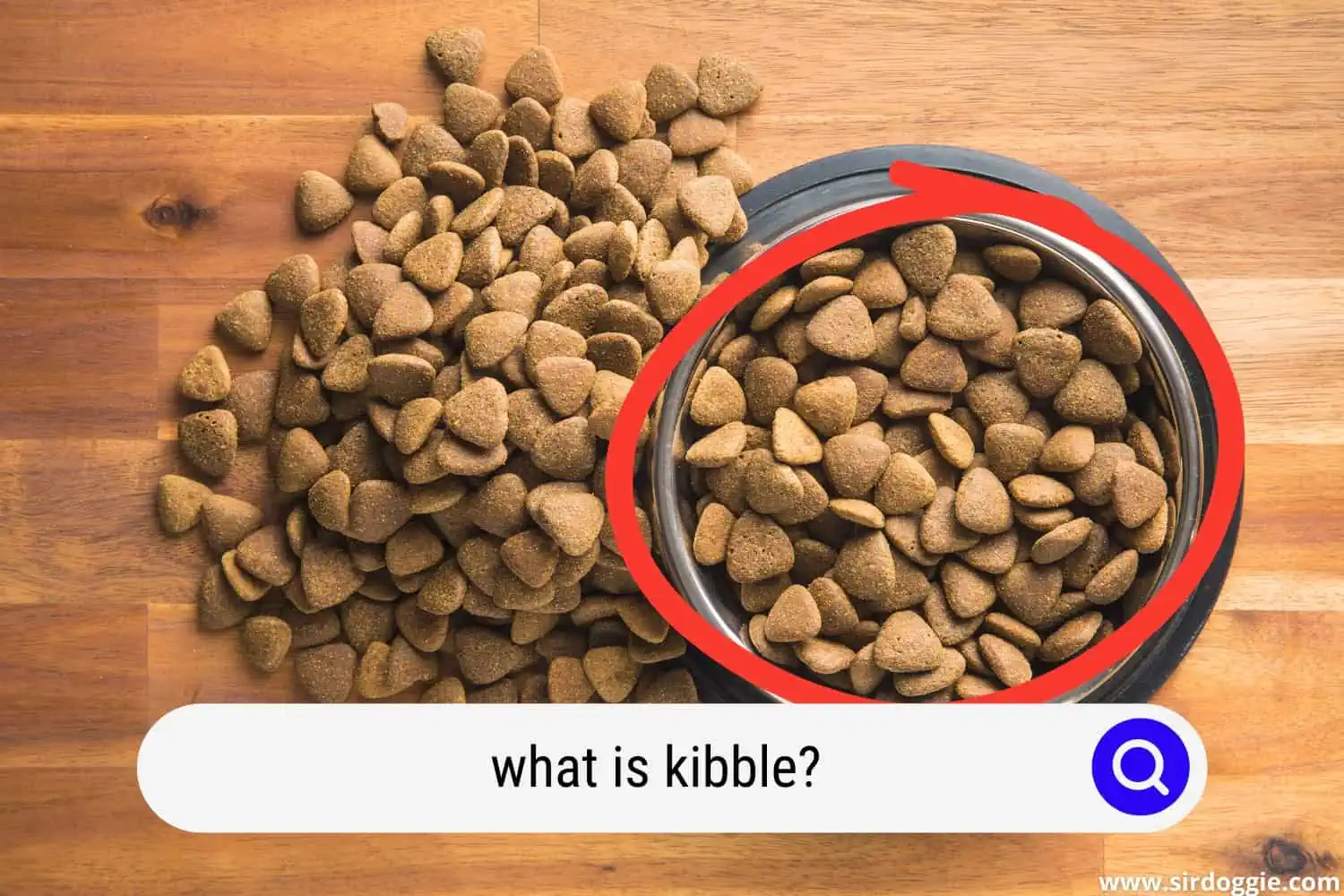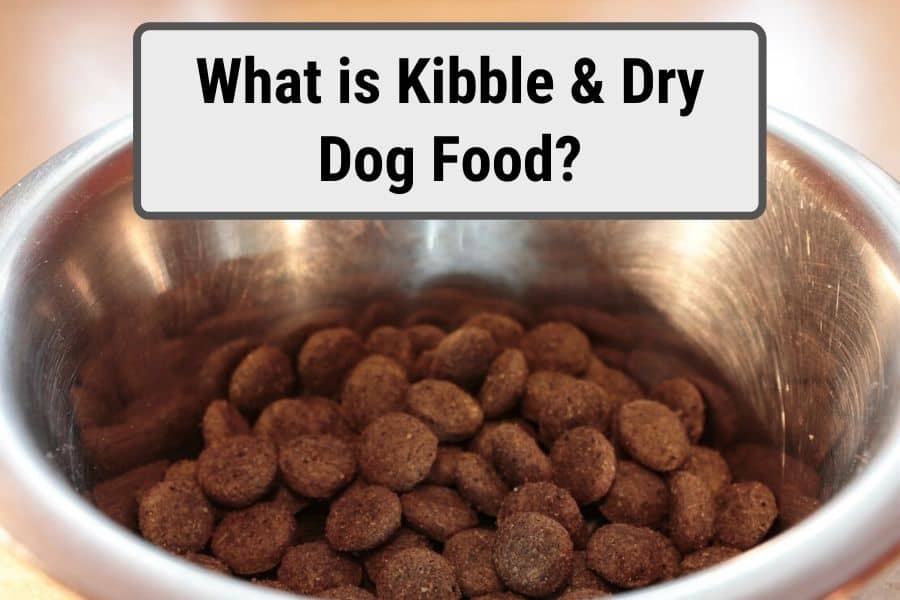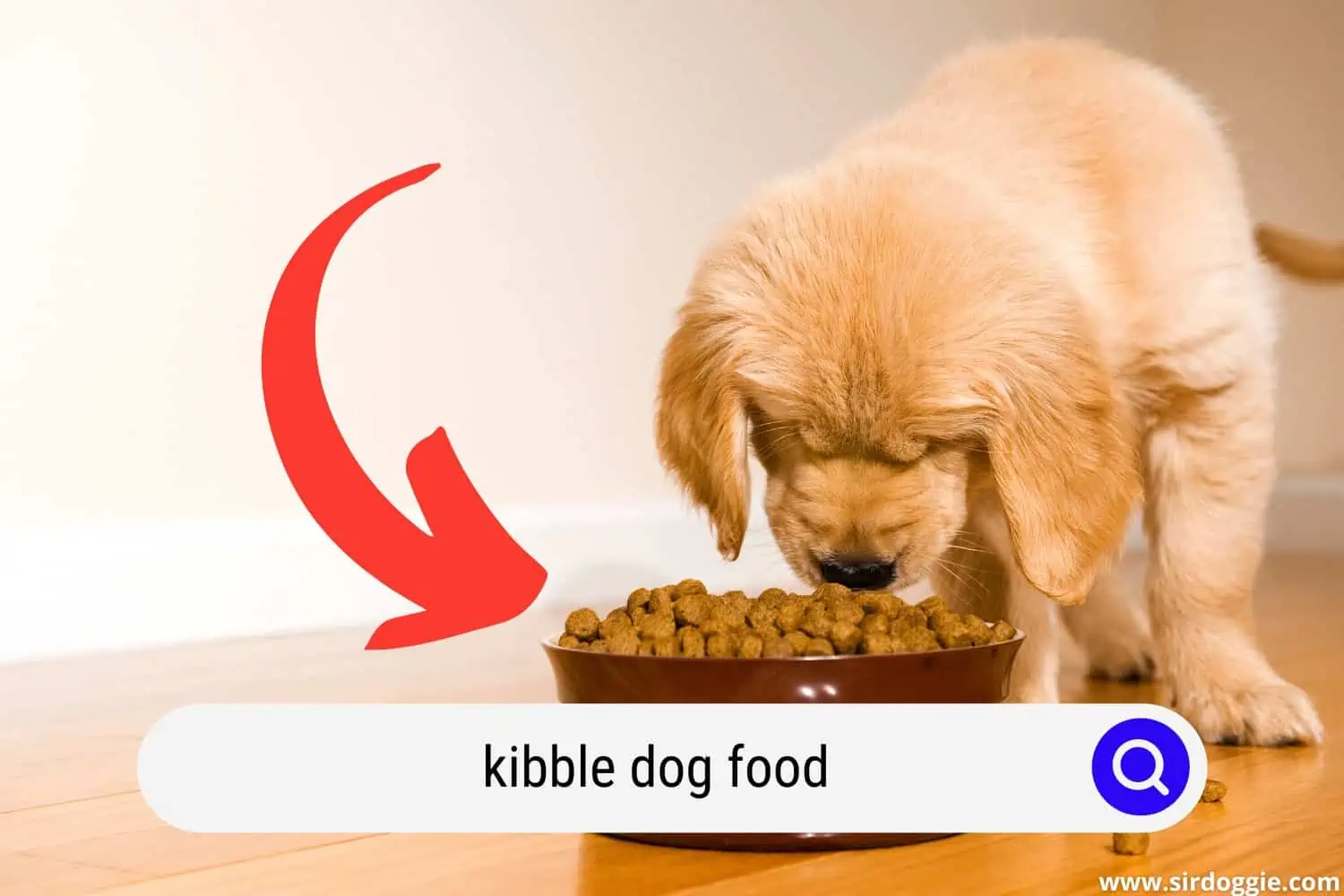What Is Kibble? Evaluating Dry Dog Food
Ever wondered what kibble actually is?? Kibble is what most people refer to as dry dog food. It is considered one of the most convenient options for feeding your dog as you do not need to prepare it in any way, it is often inexpensive, and it can be bought in large quantities. However, many debate whether kibble is actually the most nutritionally sound choice for your pet.

We love our dogs and we just want what is best for them. When you become a new pet parent or whether you have loved your doggies for years, you may wonder what exactly kibble is. Is it the healthiest option out there? And what are the pros and cons of feeding kibble to your dog?
Keeping your doggie healthy is probably one of the most important things to you, especially to those of us who only have doggies fuss over.
There are both benefits to feeding a kibble diet, but there are also downsides to it too, and I want to share with you what both of those are so you can make an informed decision on feeding kibble to your canine.

What Exactly Is Kibble and Dry Dog Food?
Basically, kibble is dry dog food. Usually sold in bags at any pet store and most grocery stores. Some mom and pop feed stores may even sell it by the lb. Kibble is the catch-all term used for a wide variety of different dry cat or dog foods.
Ingredients and recipes can vary between brands as much as the quality can. From no-grain formulas and limited ingredients to those marketed for larger or smaller dogs, there is a wide range of kibble available for purchase.
There are even certain types sold by your vet, including prescription varieties for certain health conditions like kidney damage or diabetes
Kibble is created by mixing a recipe or formula of ingredients together (most not suitable for human consumption), mixed into a paste, then extruded by the mixer and baked into a hard piece of food that usually has less than 5% moisture to ensure a long shelf life without molding.
The Benefits of Feeding Kibble
Knowing the upsides that come with feeding kibble can help, in part, in making a decision whether or not feeding kibble is right for your home, as it is for millions of other doggie families.
Some pet parents take to the internet to find the “best diet” for their doggies. And while they have good intentions, they may become overwhelmed by all the contradicting information that’s out there on the net.
Here’s a great quote from Dr. Lisa M. Freeman, DVM, PhD, DACVN, who is a veterinary nutritionist and a professor at Cummings School of Veterinary Medicine at Tufts University.
She is on the cutting-edge of science, with hundreds of articles in prestigious journals, speaking engagements at national and international conferences, and awards for her scientific achievements.
She also is passionate about providing objective and accurate information on pet nutrition to veterinarians, pet owners, and other animal enthusiasts.
I think this is an important quote as I often see pet parents get hung up on the specific ingredient list in a dog food and while it can be important, most of us aren’t properly trained or educated to actually decipher the meaning behind it all.
“Pets require nutrients, not ingredients; a diet full of great sounding ingredients can be less nutritious than a diet containing less appealing (to people) ingredients. Some manufacturers may add ingredients to diets solely for marketing purposes, to increase the appeal of the diet to consumers. These ingredients may have unproven benefits, be present in minuscule amounts and provide nothing to the diet but added expense.” [source]
Convenience of Time
Feeding kibble, or dry dog food, can definitely be convenient when it comes to time.
When everyone is rushing to get out of the house in the morning, taking a couple of extra minutes to fill the dog bowl in the morning will help to ensure that your canine companion has a chance to eat his breakfast as well. It will also prevent him from looking for other sources to fill his tummy.
It also makes for faster cleanup, should you have an over enthusiastic puppy that makes a mess when they eat or dogs that play together in the kitchen and knock over the food dish.
Sweeping up doggie kibble is always an easier clean up that trying to clean up wet food that had gotten spilled, especially if they are being fed on carpeting.
Consistency of Caloric Intake
When you are faced with an overweight dog or one that has health issues, such as diabetes, you may have concerns about it taking in too many calories in a day. This can be limited by knowing exactly how many calories are in a cup of food, for example.
This can help you to determine exactly how many calories your dog eats per day, minus any extra treats.
Dry food, or kibble, is less calorie dense than wet food is, so your dog is able to eat more without taking in more calories when eating dry. This allows a dog that just likes to snack throughout the day the option to be able to eat more without taking in more calories.
This can be especially helpful when your vet needs to know how many calories a dog is taking in on a daily basis.
The Cost Benefit
Kibble can be easier on the wallet, especially when you buy in bulk, depending on the brand and the size you buy.
You can get some store brands that are as cheap as 25 cents per pound or higher quality, more expensive brands that could cost as much as $2 per pound or more. Buying in bulk can help to mitigate the expense a bit since the per pound price will drop.
Longevity of Purchased Food
When you purchase dry dog food or kibble, it will last longer without spoiling, like wet food can. It also does not need to be refrigerated like wet or raw food. This means you are able to purchase in bulk without concern of food going to waste.
Although the longer it sits, it can begin to lose nutritional value, even though it is still edible for your dog.
The Disadvantage of Kibble and Dry Dog Food
For every upside, there must also be a downside or a disadvantage, and kibble, like most things in life, also has its drawbacks as well.
Nutritional Value
There are some sites, and even some vets, that will question the nutritional value of some or all kibble. The biggest issue is with the lower priced brands.
As it sits, whether that is in your pantry or in a warehouse somewhere, the kibble may lose its nutritional value over time.
Questionable Sources
Since “pet quality” is not the same as “human quality”, this can bring into question where the food is sourced from before it becomes a part of your dog’s kibble.
While things like bone meal or chicken meal may not sound all that bad at first, it could translate into things like chicken beaks and feet.
If something is not deemed high enough quality for human standards (as set forth by the US government or FDA) then it is typically used for pets or livestock.
This is just one of the ugly truths of the pet food industry. Human food that has fallen on the floor could be used for pet food as well.
Questionable Ingredients Like Fillers
This is another area where the lack of transparency can be an issue when it comes to pet food in general, but primarily when it comes to our doggies.
Read your labels as some companies will state clearly on the label “Grain-free” and then the first ingredient is corn or corn meal (FYI, corn is not a vegetable, it is technically a grain).
One of the biggest fillers that I have seen that has made me weary for a long time is soy in pet food. I will go through every brand in a pet food aisle reading ingredients to see if soy is in the food in one form or another.
Grain-free also means soy free, but sometimes it is just a name, not a description of the contents in the bag.

Alternatives to Kibble and Dry Dog Food
There are a few options for your canine companion if you feed that kibble just isn’t for you and trust me, I understand that.
Even though I do feed my dog’s kibble, I also opt for healthy treats to balance how much kibble they are to make sure they are as healthy as I can provide on my limited budget.
Wet Food
There are a number of different wet foods made for dogs that can offer more variety than plain kibble can. If you are having issues getting your dog to eat the kibble you bought, mixing it into some warmed up, high-quality, wet food can entice your doggie to expand their palate to include the kibble.
You can also offer a warm, wet breakfast or supper and leave kibble out throughout the day for them as well. While wet food does not need to be heated, it does increase the aroma, which may make it more enticing.
Raw Food or Homemade Diet
This is usually the most expensive and time intensive option available. It can also be the healthiest and can be made to more closely match their individual palate and/or nutritional needs.
You can either feed strictly a homemade diet or split the difference and offer homemade treats to supplement a kibble diet.
Due to my limited budget, I can’t always afford high-quality meat for my own meals, so I obviously can’t afford that for my doggie.
I can afford to make extra when I cook a healthy meal for myself and make sure they each get a little bit of fresh food. Whether I am feeding raw carrots and cooked chicken, I try to make sure my doggies do get a chance to get some good treats too.
This post was meant to be informative in nature. As a pet parent, you should not be made to feel inadequate due to your financial restraints. Making informed choices within your budget is the best you can do, and you should feel good about that.

Family Dog Expert Author
Hi there! I’m Stuart, a devoted dog lover and family dog expert with over a decade of experience working with our furry companions. My passion for dogs drives me to share my knowledge and expertise, helping families build strong, loving bonds with their four-legged friends. When I’m not writing for SirDoggie, you’ll find me hiking, playing with my beautiful dog, or studying music.